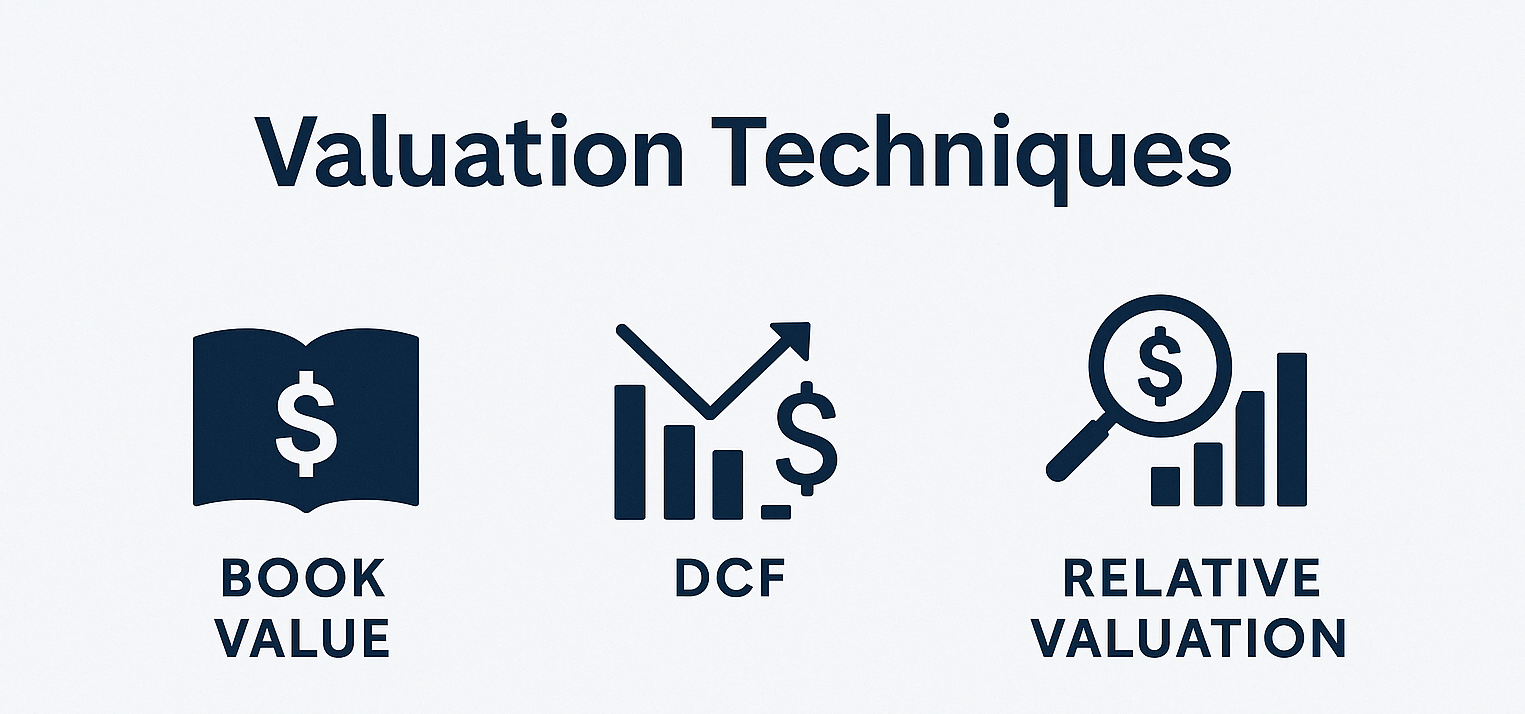Your cart is currently empty!

Understanding Business Valuation Methods: Book Value, DCF, and Relative Valuation
Posted by:
|
On:
|
Exploring Valuation Techniques: A Beginner’s Guide
This week, I’m starting some free online classes by Professor Damodaran, a renowned valuation expert at the Stern School of Business, NYU. These classes are open to anyone and offer a wealth of knowledge on understanding the value of a business. I plan to incorporate valuation techniques into my investment strategy to become a better investor.
Before diving into the nitty-gritty, let’s explore some key valuation methods, when to use them, and why they matter.
Overview of Valuation Methods
1. Book Value
- When to Use: Asset-heavy businesses (e.g., industrial, real estate)
- Example: A manufacturing company with significant plant and equipment assets
- Pros:
- Simple to calculate
- Useful for liquidation analysis
- Cons:
- Ignores earnings potential
- Does not account for intangible assets (like intellectual property or brand value)
2. Discounted Cash Flow (DCF)
- When to Use: Stable cash flow businesses (e.g., mature tech firms)
- Example: A tech firm with predictable cash flows
- Pros:
- Accounts for future cash flows
- Considers the time value of money
- Cons:
- Sensitive to assumptions (e.g., growth rates, discount rates)
- Can be complex to calculate
3. Relative Valuation
- When to Use: Companies in comparable industries
- Example: Comparing P/E ratios of retail chains
- Pros:
- Quick and easy to apply
- Good for industry comparisons
- Cons:
- Not applicable across different industries
- Can be misleading when comparing very different businesses (e.g., tech vs. industrial)
Book Value
Book value is based on a company’s tangible assets and liabilities. Essentially, it shows how liquid the company is if it were to go bankrupt.
Example:
Imagine a cookie shop that owns the building and equipment it uses. The assets include land, ovens, mixers, and refrigerators, while the liabilities consist of a bank loan. The book value is calculated as:
Assets – Liabilities = Book Value
For instance, if the shop’s assets total $200,000 and its liabilities are $120,000, the book value is $80,000.
Book value is especially useful for companies with significant tangible assets, such as manufacturers or real estate firms. However, it’s less effective for asset-light companies, such as tech firms, where intangible assets like brand value and intellectual property are more significant.
Discounted Cash Flow (DCF)
DCF is one of the most widely used methods to estimate a company’s intrinsic value based on its future cash flows.
Example:
Consider a lemonade stand that generates $500 in monthly cash flow and plans to expand by investing $2,000 in a new stand. The expected cash flow from both stands is $800 per month.
To calculate the DCF, we need to:
- Estimate future cash flows
- Determine a discount rate (e.g., the cost of capital)
- Calculate the present value of those cash flows
This method is highly effective for stable, cash-flow-generating businesses. However, it can be complex and is sensitive to assumptions about growth rates and discount rates.
Relative Valuation
Relative valuation involves comparing a company’s metrics to those of its peers or to its historical averages. Common metrics include:
- Price-to-Earnings (P/E)
- Price-to-Sales (P/S)
- Price-to-Book (P/B)
- Debt-to-Equity (D/E)
Example:
Say you’re evaluating two lemonade stands for acquisition. Stand A generates $100 monthly profit and is selling for $1,500 (P/E = 15). Stand B generates the same profit but is priced at $2,000 (P/E = 20). Stand A offers a better value based on P/E.
Relative valuation is quick and easy but should be applied cautiously across industries. Comparing Apple to Ford using P/E ratios, for instance, wouldn’t provide useful insights given their vastly different business models.
Final Thoughts
Valuation is not a one-size-fits-all approach. Each method has its strengths and weaknesses, and the key is to use multiple methods to create a range of potential values. For the next post, I’ll dive deeper into income-based valuations, specifically the capitalization of earnings method.
As Warren Buffett said, “It is better to be approximately right than to be precisely wrong.” Stay tuned for more insights on valuation techniques and how to apply them effectively.
Disclosure: As an Amazon Associate, I earn from qualifying purchases. The content provided in this blog is for informational and educational purposes only and does not constitute investment advice. Always perform your own research and consult with a licensed financial advisor before making any investment decisions. For our full disclosure go here to our privacy page.

